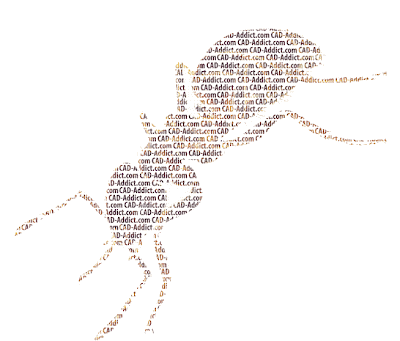 The transition from 2D CAD to 4D CAD that changed the way architecture is nowadays.
The transition from 2D CAD to 4D CAD that changed the way architecture is nowadays.Català - Castellano - Deutsch
Go to Part I
The Adoption of CAD software in Architecture firms was progressive, (I am still trying to find some information on a more or less exact timeline of CAD implementation in Architecture Firms) and it is nowadays widely spread in virtually all architectural firms. Some resisted the adoption of the CAD systems, and others have argued that CAD poses some challenges to creative design. Nevertheless, in 2009, the Architects Journal published the result of a study and poll amongst construction industry leaders, and the result showed CAD/CAM as the greatest advance in construction history.
Initially, CAD was used in Architecture Firms as a replacement for hand Drawing, meaning only 2D CAD was actually used regularly. This, was already an incredible step in terms of productivity, but it meant a less significant step in terms of work processes. Cad was in the beginning only a tool to draw faster. Until the adoption of 3D CAD, the proper change didn’t start.
Still, the initial use of 3D CAD was mostly as a presentation tool having not a very influencing role in the design process. Many companies still see it that way and only use 3D as a presentation tool. The truly significant change happened when 3D CAD started to be used a sa design tool. Its importance in the design process can be understood if one analyzes some of the latest building shapes and structure designed and built. Some of the latest buildings by Zaha Hadid, Frank Gehry, studio Morphosis, Asymptote and others, are hard to imagine before the advanced 3D CAD era. There are of course exceptions (complex shaped buildings entirely designed on the pre CAD era, one of my favorites is the Ronchamp Chapel by Le Corbusier) but you will agree with me that those complex shaped buildings have become much more common since 3D CAD has been adopted as a design tool.
Especially important on this late stage is the spread of complex surface modeling programs and explicit history and parametric capabilities. One of the big players on those two fields is Rhino with its explicit history plugin called Grasshopper. More and more buildings are being designed and the designs are being modified thanks to this sort of capabilities. The complex surface modeling features allows to model shapes and forms that would be impossible with simple 3D programs. The explicit history and parametric features allow the modification of these complex shapes without the need of remodeling them as it used to be common in primitive 3D CAD packages (and is still the common workflow in simple 3D CAD nowadays).
The 3rd dimension in CAD was conquered long ago and has been improved to the point that almost any imaginable shape can be modeled in a computer, and buildings can be built based on those 3D models. The 4th dimension (time) has been also explored with flythrough and animations being used in almost any big building project. But part of this 4th dimension of time can still be used more deeply. On the following documentary about the construction of the Yas Hotel by Asymptote in Abu Dhabi we can see this fourth dimension explored in depth.
Time is used not only for fly through animations, but to simulate the construction process and, that way, find possible collisions between building elements during the construction phase (the crane and some façade elements in the video). The logical step, is to use this 4D approach more and more to avoid conflicts during the construction phase.
What comes after the 4D dimension is the area where BIM means a real revolution. Incorporating the nD, or “n” dimension to the 3D Modell is what makes BIM so revolutionary and at the same time so necessary. We will explore this on the next issue of “From CAD to BIM”.
Go to Part I
Show me more...
















